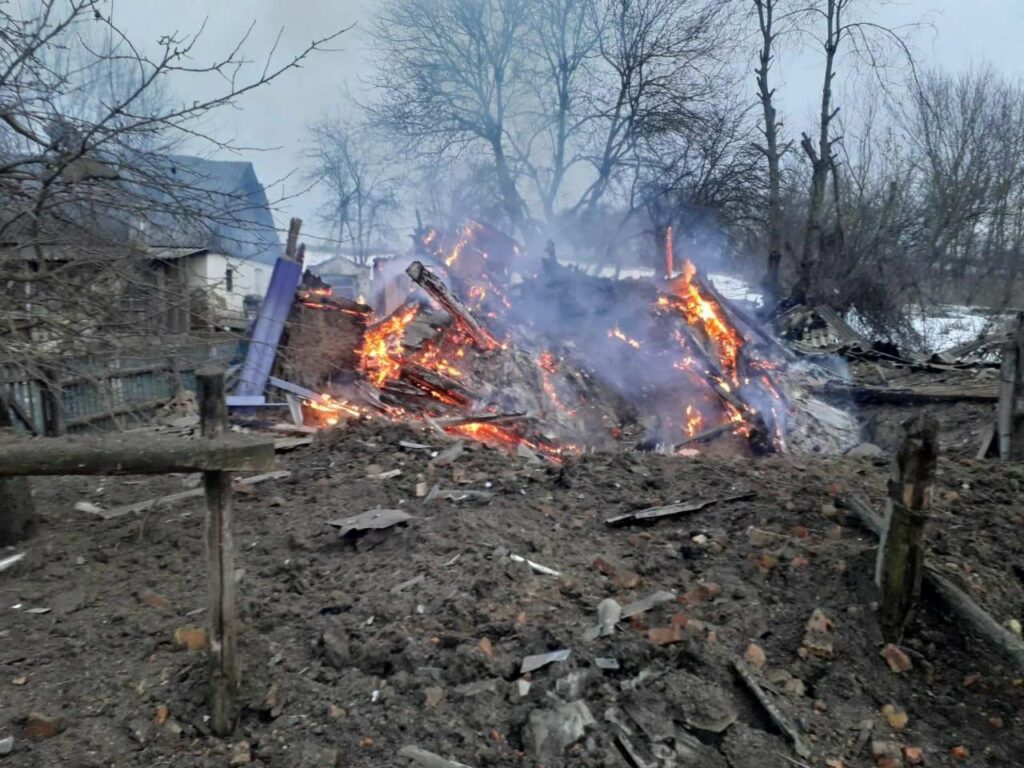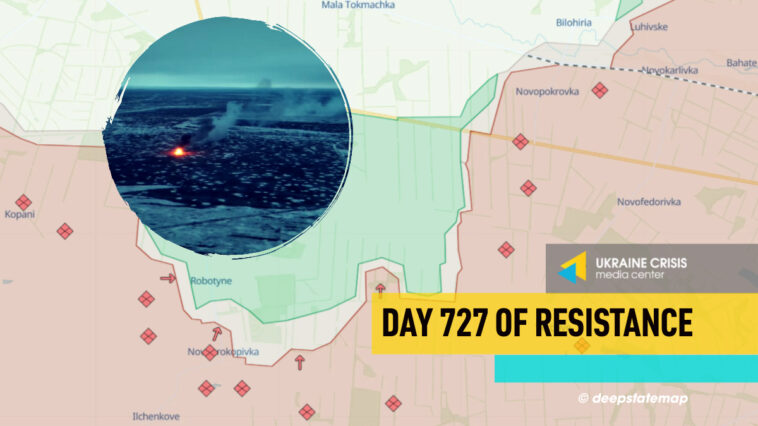Russia is trying to take the offensive in the Zaporizhzhia sector, Russian attack near Konotop – a family of five killed by a Lancet strike on a house, Polish blockade of the border is getting tougher – the railway is blocked, grain is poured out, buses are stopped
Russia is trying to take the offensive in the Zaporizhzhia sector
Almost immediately after seizing Avdiyivka, the Russians attempted to launch a new large-scale offensive in the Zaporizhzhia sector, notably near the village of Robotyne, which was liberated in the summer. The Russians concentrated a large group of soldiers, estimated at tens of thousands, in this area of the frontline trying to cut off the Robotyne salient.
Over the previous days, the AFU showed numerous videos of repelling Russian assaults around Robotyne, including those where with the occupiers used armored vehicles. And on February 19, CNN cited unnamed analysts as saying that Russia had assembled a “huge number” of troops numbering up to 50,000 in the Zaporizhzhia sector. This figure probably stems from the estimates of Ukrainian Tavriisk Group of Forces Spokesperson Dmytro Lykhoviy, who said that the Russian forces had accumulated a group similar to Avdiyivka group in this part of the front.
Already on February 17, it was confirmed that the Russians had started an offensive in the Zaporizhzhia sector, although initially unsuccessful. The AFU posted a video of the defeat of a mechanized convoy that was part of the Russian offensive consisting of up to 30 vehicles. The General Staff of the Armed Forces of Ukraine later clarified that the occupiers had unsuccessfully attempted to attack Ukrainian positions west of Verbove and Robotyne 13 times that day. As a result, 18 vehicles, including tanks, were destroyed and about 150 Russians were eliminated and wounded (70 of them were killed).
As of February 20, the AFU General Staff reported on 11 attacks repelled by the Defense Forces near Malynivka and Robotyne in the Zaporizhzhia region during the day. Ukrainian defenders reported that the night was “difficult”, but the situation was “under control”. General Tarnavsky confirmed the number and areas of attacks and said that “there were no significant changes” in the Zaporizhzhia sector.
Russian attack near Konotop. A family of five killed by a Lancet strike on a house
In the Sumy region, the number of people killed in a Russian attack on a residential building in the Novoslobidska community of the Konotop district has increased from two to five. A whole family was killed.
This was reported by the Sumy Regional Military Administration. They said that a Russian Lancet drone hit the house at around 5 a.m.
The attack killed a mother and her two sons, as well as their two extended family members: a grandmother and a woman who came from another city.
Russian troops regularly shell the border settlements of the Sumy region. During the night and morning of February 20, Russia carried out eight attacks, the authorities reported 39 explosions.

Polish blockade of the border is getting tougher – the railway is blocked, grain is poured out, buses are stopped
Protests by Polish farmers are rapidly gaining momentum. On February 20, protesters blocked the railway near the Medyka-Shehyni border crossing. They opened the railway carriage to let grain spill out.
Footage filmed by the Suspilne Lviv correspondents shows protesters scattering grain onto the tracks and singing the Polish national anthem (the grain was headed to Germany).
Besides, Polish protesters block the passage of Ukrainian trucks, even those carrying military and humanitarian aid.
The State Border Guard Service confirms to BBC Ukraine that the blockade of the border has become “tougher.” Traffic for all types of transport will be partially or completely restricted at six border crossings: “Medyka-Shehyni,” “Dołhobyczów-Uhryniv,” “Zosyn-Ustyluh,” “Korczowa-Krakowiec,” “Hrebenne-Rawa-Ruska,” and “Dorohusk-Yagodyn.”
Border guards say that the protesters will stop buses and cars.
On February 20, at the Dołhobyczów-Uhryniv checkpoint, traffic will be closed for all types of transport until 17:00.
At the Zosyn-Ustyluh checkpoint, traffic for passenger buses, cargo and passenger vehicles will be restricted in both directions from 13:00 to 16:00 Kyiv time.
All vehicles except for those carrying critical cargo and humanitarian aid have been blocked since 13:00 (Kyiv time) at the Hrebenne-Rawa-Ruska checkpoint, Border Guard Service spokesman Andriy Demchenko explained to BBC Ukraine.
For their part, Ukrainian carriers began a “peaceful action in response” to the border blockade. Actions are held near the Rawa-Ruska-Hrebenne, Krakowiec-Korczowa, and Shehyni-Medyka checkpoints.
The day before, Polish farmers said that on February 20, they plan to block all checkpoints on the border with Ukraine, as well as transportation links and entrances to transshipment railway stations and seaports.
The Ministry of Foreign Affairs of Ukraine states that there is no excuse for blocking Ukraine’s borders.
“Land borders remain important in the face of Russian aggression. The actions of Polish protesters and some radical Polish politicians undermine Ukraine’s economy and resilience to repel Russian aggression,” said the spokesman of the Ministry of Foreign Affairs Oleh Nikolenko.




